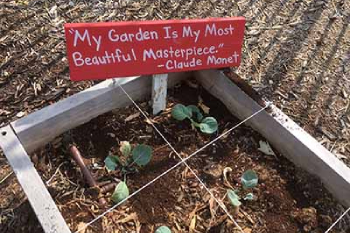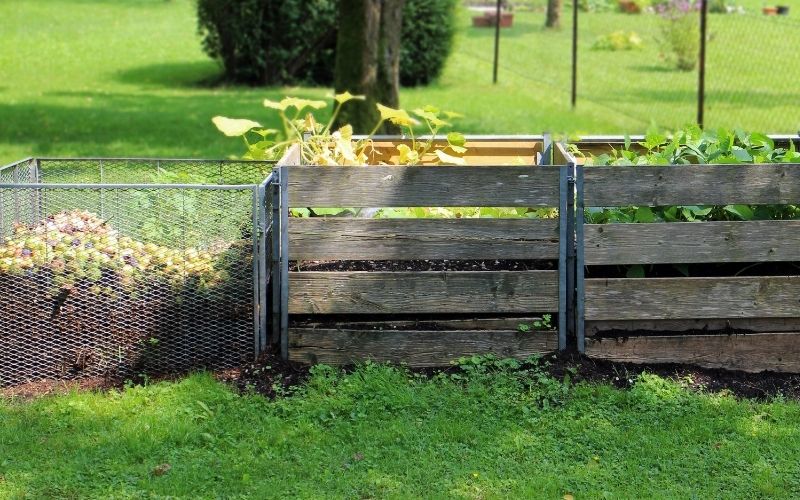REQUEST A SPEAKER
Thank you for choosing the Dallas County Master Gardener Speakers Bureau which provides scientifically research-based and of-interest topics to groups and organizations throughout the North Texas area.
We are now scheduling some presentations in person, but some presentations remain available only in virtual format. Please complete the Speaker Request Form and indicate in the message area which format you need or discuss with the scheduler upon contact.
Dallas County Master Gardener’s Association can host your zoom if needed.
View the program categories listed below! If you cannot find the specific topic you are interested in, complete a request form, and discuss also with the scheduler.
Note: When a speaker travels outside Dallas County, we request that they are provided a travel allowance of $25, paid directly to the speaker. Do not include the travel allowance with the Honorarium.
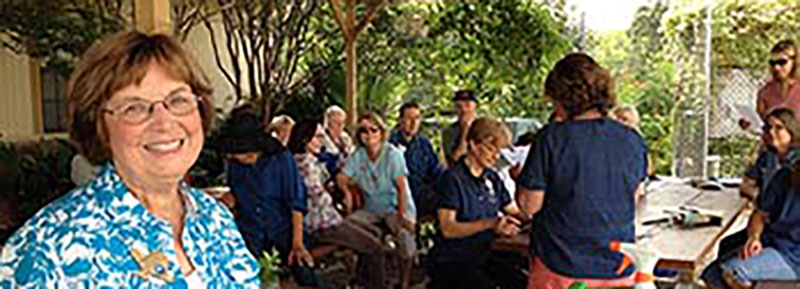
GUIDELINES
- Complete the Speaker Request Form.
- If you do not receive a confirmation within 48 hours, contact the DCMG Help Desk by email: dallasmg@ag.tamu.edu.
- Allow 3 weeks to schedule a speaker.
- For groups of 10 or more.
- Speaker Bureau volunteers are not available during December.
- There is no charge for speakers. However, donations are accepted in the form of Honorariums, which support our DCMG community projects.
- Honorarium checks should be made out to DCMGA and mailed to: DCMGA Treasurer, 6820 LBJ Freeway, #3200, Dallas, TX 75240.
Click on a category below and scroll to review speaker topics in that category:
Basic Gardening
Basic Gardening
Basic Garden Planning
Do you want to start a garden of herbs, flowers, or vegetables or a combination? This presentation outlines the first steps to take. It covers basic garden needs as well as what to grow, where to locate a garden, and where to get more information.
Gardening in Small Spaces
Apartment patios or urban courtyards can produce a bountiful stand of plants if you make the proper choices. Everything from containers to reclaimed grassland can be the basis of a pocket garden.
Gardening on a Shoestring: Confessions of a Frugal Gardener
Describes how to recycle household items for use in and around your garden.
Perils in Your Garden and How to Avoid Them
Gardening is a beautiful way to relax in the fresh air while enjoying the “fruits” of our labor; however, each year many gardeners sustain injuries due to accidents, natural hazards, and occasional poisoning. This lecture outlines how planning and preparation can avoid injuries—seeking effective treatment when an injury occurs.
Composting
Basic Composting
This talk explains how to simply create rich compost in your backyard for your garden.
Basics of Composting
Everything you need to know about the benefits of compost, its four basic elements and how you can build a compost bin for your garden.
Compost 101
Composting kitchen and yard waste is becoming more and more popular. However, there are some do’s and don’ts to composting. This presentation gives you the secrets for a better compost pile.
Composting 101
The presentation addresses how waste products, otherwise destined for the landfill, can be converted into a material that, when added to the soil, benefits plant life and the environment. It briefly covers the science involved in converting waste material into compost through the activity of microorganisms, insects, and other invertebrates. There is an in-depth presentation of well-known and lesser-known methods of creating compost.
Let It Rot
Learn about composting and how to give the soil what it wants.
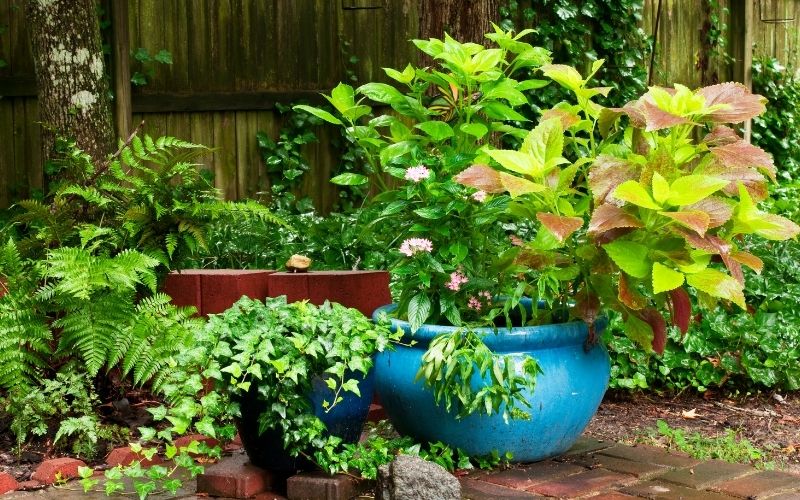
Container Gardening
Container Gardening
This demonstration talk covers the four basic elements of container gardening: pots, soil, plants, and time. Plant combinations for shade, sun and different seasons are discussed, as well as new container systems.
Containers that Grow
This talk covers tips for creating attractive container gardens in large pots or containers for the out-of-doors. You will learn what to look for when searching for flowers or plants and how to position and plant them, so your containers become the envy of your friends and neighbors.
Do’s and Don’ts of Container Gardening
Learn how to choose the container, the plants, and the soil to grow beautiful flowers and flavorsome herbs and vegetables. Learn which plants are good companions and some combinations that “fight” for the limelight.
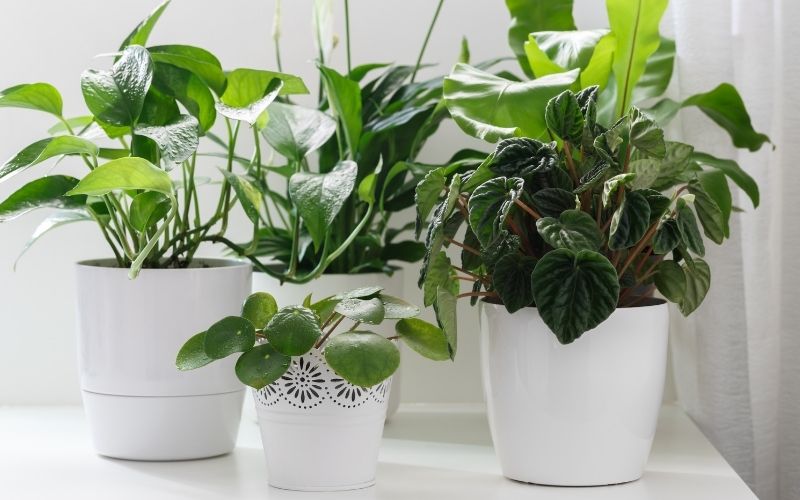
Houseplants
Growing African Violets
Growing African violets is not as hard as you might think. Learn to grow these spectacular plants in a windowsill or under a grow light.
Successful Indoor Gardening
This talk provides guidance for the selection, location (in the home or office), and maintenance of beautiful, sometimes tasty plants that will thrive (not just survive) indoors. It begins with plant selection and suggests where to place plants in your home or at the office. The mysteries of indoor lighting, watering (enough, too much, or too little), and fertilization (which kind?) are discussed, and the talk concludes with indoor vegetable gardening (with or without a greenhouse).
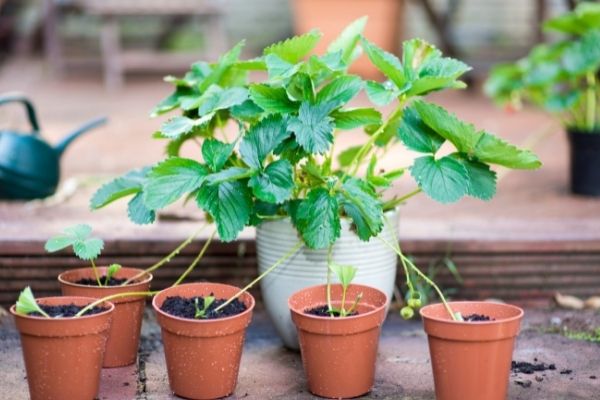
Propagation
All About Seeds
Our very existence depends on seeds and seed production. In this class you will learn the ABCs of seed production, seed storage and seed propagation, the ABCs of seed production, seed storage and seed propagation.
Taking the Mystery Out of Plant Propagation
Are you ready to solve the mystery of propagating new plants? Learn how to create new plants from cuttings, division, and layering, and discover the ABCs of seed collection, storage, and germination.
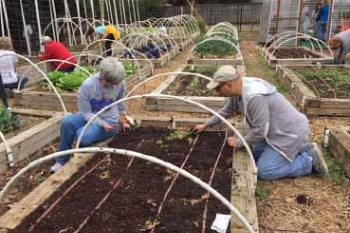
Seasonal Gardening
Planning a Fall Garden
Do you want to take advantage of a second season of gardening in North Texas? This presentation outlines fall garden activities and tips, timing of the fall garden, the importance of compost/mulch, and where to get more information.
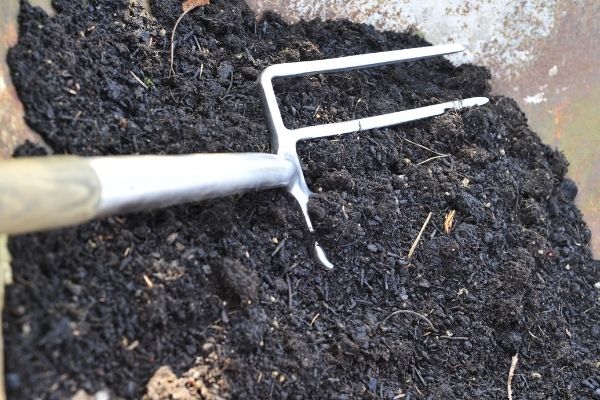
Soil Preparation
Make Your Beds
Learn how to acquire fertile soil from your clay-based dirt.
Soil Preparation
This talk covers the elements that make up soil in the Dallas area. Topics discussed are how soil texture and structure affect plants, as well as the importance of compost, mulch, the varieties of soil additives, and how to use fertilizer.

Tools for the Garden
Tool Time
Learn what tools are needed to be a successful gardener.
Butterflies & Pollinators
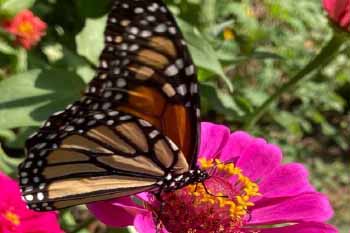
Butterfly and Pollinator Gardening
All You Can Eat Buffet for Migrators
DFW is in the central flyway for the migrating butterflies and hummingbirds that come through in the spring and fall, and they need all the food they can get. Learn what you can add to your gardens to help fuel these flying jewels along their journeys of thousands of miles during these critical times.
Attracting Pollinators with Native Plants
If you plant them (native plants), they (pollinators) will come! Create an oasis of beauty in your garden. Enjoy butterflies and more as you support the pollination process by planting native plants.
Butterfly Gardening
Tells how to provide everything these beautiful “flying flowers” need so you can see lots of them in your own yard, whether you want to offer only a quick drink or an all-you-can-eat buffet. Also learn what butterflies you are likely to see and how to identify the stages of their life cycle.
Flowers…and Chocolate? A Tale of Unique Pollinators
Gardening plus dessert! Learn how nature is like a recipe and find the secret to how nature makes dessert ingredients like chocolate and vanilla. This talk is a deeper dive into our native pollinators: how they fit into your garden and why emulating nature matters. Learn about the relationship between plants and their pollinators and how certain plants and places are important for certain pollinators. Plus, you will get delicious recipes and tips to help bring more pollinators to your garden.
For the Love of Butterflies
Learn about butterflies, their habitat and how easy it is to incorporate a butterfly garden into your existing landscape.
Gardening for the Love of Birds, Bees and Butterflies
If you love birds, bees, and butterflies, you can do small things that have a big impact. This talk describes the need to provide food and habitat for native plants and animals. It focuses on pollinators. Included are concepts you can incorporate into your own landscape to have a positive impact for our friends in nature.
How to Attract Butterflies and Hummingbirds
Learn how the right plants can bring you the pleasure of seeing these “flying flowers” and create your own nature channel.
How to Create a Butterfly Garden
This talk covers the basics for butterfly gardening and includes information regarding the National Wildlife Federation Mayor’s Monarch Pledge.
Miracles of Monarchs
Explains the lifecycle of the state butterfly of Texas, its migration of thousands of miles and how we can help their population size from dwindling even more. See photos of their winter home in Mexico, learn about the conservation efforts and learn what you can do to help. If you like butterflies, you will enjoy and appreciate this presentation.
Monarch Butterly Tagging
Have you planted a pollinator, native or wildlife garden? Learn about a few Citizen Scientist projects, specifically how to tag migrating monarchs in the Fall. This talk includes the history of the activity, where to order the tags, and details on how to tag and record the activity.
Native Pollinators
This presentation (PowerPoint) discusses bees that are native to the United States and what they pollinate. It also discusses how to attract these bees to assist in the pollination of your garden and plants.
Plants for Pollinators
This program presents flowers for feeding bees and butterflies in all seasons. The list of flowers includes shade loving plants.
Pollinators 301: A Deeper Dive into Plant-Pollinator Pairings
Maybe you have mastered the basics of butterflies, have learned a bit about bees and know the hummers hover. You are ready for a deeper understanding and appreciation for nature. Come learn the surprising ways certain pollinators are specifically suited for the plants they pollinate. This talk is known for the photography and video it contains. The talk also contains recent research on the co-evolution of hummingbirds, bees and salvias.
Sex in the Garden
This entertaining and educational talk describes what really goes on in our gardens: pollination. Learn how flowers lure insects to help with their reproduction and how they reward the pollinators. You will never look at the garden in the same old way again.
To Bee or Not to Bee
This talk explores the differences between bees and wasps and explains how they live. It also profiles a variety of native and imported bees and how they help in plant reproduction.
Unveiling the Hidden Wonders of Planting a Pollinator Garden
Growing a pollinator garden is fun, beautiful and good for nature. But it’s more than just a few pretty flowers. Come learn some of the surprising things that happen in a real pollinator habitat. Who is there and what are they up to?
Ya Gotta Love the Pollinators
Learn about the insects, birds and mammals that help our favorite flowers and crops reproduce.
Diseases
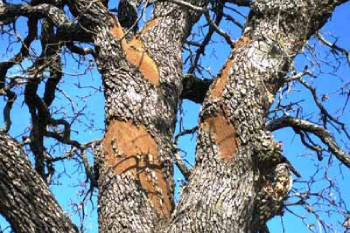
Plant and Tree Diseases
Common Disease (Pathogen) Problems
Some of our most common diseases can be a major problem for trees. Understanding how trees function and how to manage them can help keep them healthy. Having a basic understanding of common diseases also reduces the chances of tree loss in the future.
Insects and Diseases That Like Your Trees
Answers the questions “Is my tree in danger?” and “How can I help?”
Integrated Pest Management
Integrated Pest Management (IPM) is a method of controlling pests and diseases using the least harmful approach. For example, an IPM approach would use predatory insects to control aphids instead of pesticides.
Oak Wilt Diagnosis/Treatment
Oak Wilt is a devastating pathogen that can only be managed and not controlled. If your area is affected, learning about the details of this complex pathogen will help to minimize the impact to trees in your area.
Rosette Disease: Deadly Disease with a Pretty Name
Covers the history of this rose disease, how to recognize it, and what to do about it.
Earth-Kind® Practices
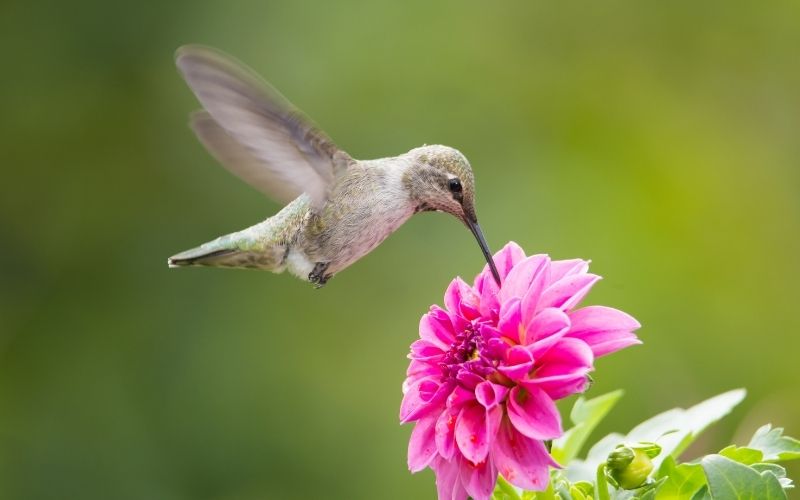
Habitat Gardening
Creating an Urban Wildlife Habitat in Your Landscape
Learn why urban landscapes should be shared with birds, butterflies, bees and other less obvious creatures. The talk covers some obvious benefits of having a sustainable landscape complemented by plants that require less effort and fewer resources while providing food, water and protection.
Invite Birds to Your Yard
Bird watching is a great way to relax while watching colorful birds eating, mating, nesting, and raising their young. Learn how to provide the plants and environment that can deliver all this in YOUR yard.
Landscaping for Birds
Watching birds is fun and relaxing. Learn more about the backyard birds in Texas, how to attract more birds to your yard and how to help them raise babies. What are the best foods for birds? What makes a good nest site? How can my love of gardening help birds? Add extra joy to your time in the garden!
Meet the Hummingbirds in Your Yard
Learn more about our lovely ruby-throated hummingbirds: their biology, migration, courting, nesting, and chick-rearing. Also, learn how to make your yard one of their favorites.

Integrated Pest Management
Integrated Pest Management
Integrated Pest Management (IPM) is a method of controlling pests and diseases using the least harmful approach. For example, an IPM approach would use predatory insects to control aphids instead of pesticides.
What are Good Bugs?
Learn the importance of allowing the good bugs to help control the few bad bugs, thus creating a garden environment that requires little or no insecticide.
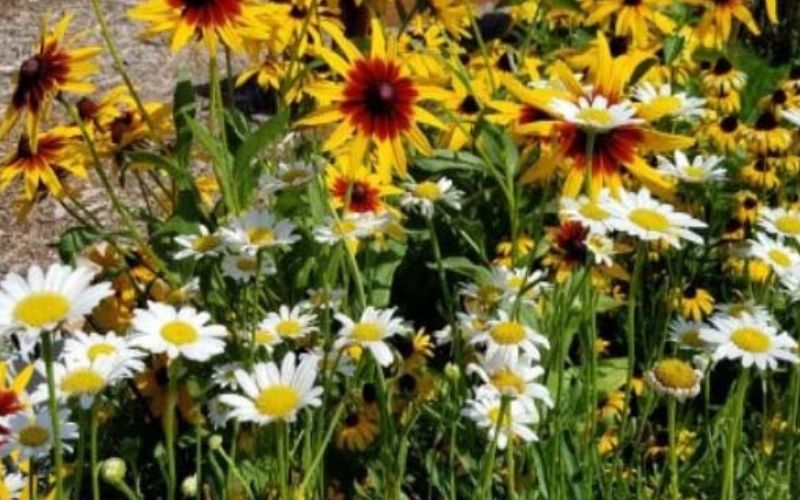
Native and Adapted Plants
Easy Gardening with Native Plants
Learn how to have a lovely landscape by using native plants that require minimal irrigation, fertilizer, and pesticides while attracting a wide variety of butterflies, birds, bees, beneficial insects, and other critters to your yard.
Go Native!
Discover how to easily care for native plants while enjoying their year-round beauty. By landscaping with native trees, shrubs, and perennials your yard will be teeming with life while requiring less maintenance, water, and fertilizer.
Inviting Nature Back Home with Native Plants
Miss seeing lightning bugs, lizards, and toads? Learn the value of native plants in the home landscape and why we should care about them. Learn which plants are the most useful for bringing birds and butterflies to your yard.
Laura W. Bush Native Texas Park
Learn about the 15-acre Native Texas Park located on the Bush Presidential Library’s campus. Includes a PPT presentation highlighting the 3 ecoregions and a virtual stroll on the 1-mile walking path. Learn about the over 300 plantings of native trees, flowers, and more. The park is open sunrise to sunset. Public tours are available Fall (emphasizing migration of birds/monarch butterflies) and Spring (wildflowers).
Texas Native and Adapted Plants
Provides an overview of plants that do well in North Central Texas and good horticulture practices that help ensure success. This presentation includes photos of the speaker’s yard and garden. The presentation can be adapted for time periods ranging from 15 minutes to an hour+ in length.
Texas Wildflowers
This talk provides information about our native Texas wildflowers. You will learn how to cultivate them in your own garden.
The Right Plant in the Right Place
Think globally and act locally! This talk, inspired by Nature’s Best Hope by Doug Tallamy, explains how native plants support the local ecology while non-natives do not add to the food web that is needed to sustain all kinds of life forms that make our planet livable.

Organic Gardening
The Big “O”
Learn about organic gardening from the ground up.
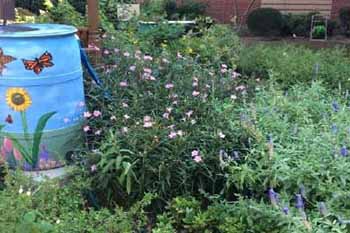
Rainwater Harvesting
Rain Barrels
This presentation introduces options available for harvesting rainwater – from professionally designed systems to hand-made rain collectors for budget-minded individuals. It includes a step-by-step approach for converting 55-gallon food quality containers into cost-effective rain barrels. (15 min/45 min)
Rainwater Harvesting
Learn the latest tips on conserving water through the use of rainwater harvesting. Includes a demonstration of creating a rain barrel.
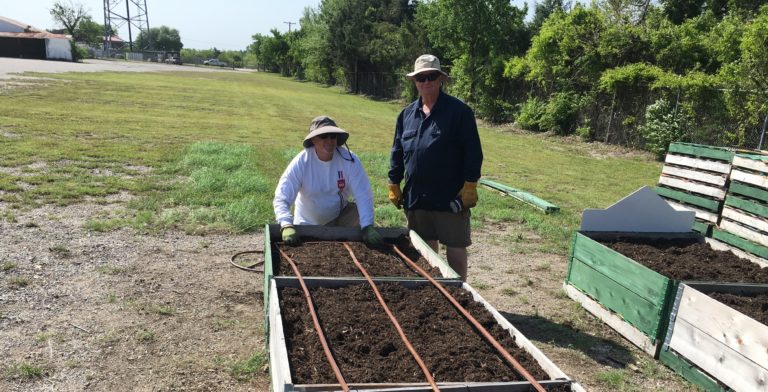
Water Conservation Gardening
Gardening with Less Water
This talk covers 7 basic steps to successful gardening using minimal water.
Landscaping for the 21st Century
Explains why Texans need to reduce the use of municipal water in their landscapes and how to do it. Homeowners can have any style landscape by choosing the right plants, placing them correctly, watering efficiently, and adding other design elements.
Water Conservation Gardening
It is possible to grow anything in Dallas—with enough time, money, work and water—but why go to all that trouble when there are so many plants more suited to this area? This presentation covers plant selection, soil preparation, and sun and shade requirements. There is an accent on the use of native plants.
Water Conservation Landscaping Doesn’t Mean Rocks and Cactus
This program explains the seven steps for creating a beautiful landscape in any style. The plants included require rainwater and very little supplemental water.
Insects
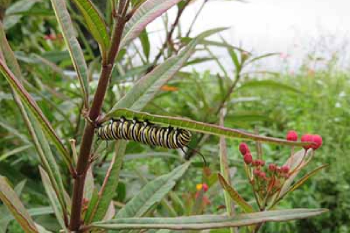
Insects
Beneficial Insects
Is your garden overrun by pests? Do you have aphids on your aspidistra, scale on your scabiosa? Have I got some bugs for you. Not all insects are pests. Most are friends of the gardener. This talk helps to identify insects that are helpful to the gardener and how to effectively decrease the dependence on pesticides.
Common Insects That Affect Texas Trees
With education about the most common insects that affect our region’s trees, we can minimize the damage to the health of a tree. Understanding which insects can be a problem and what to do when they are, will help to keep your trees healthy.
Insects and Diseases that Like Your Trees
Answers the questions “Is my tree in danger?” and “How can I help?”

Integrated Pest Management
Integrated Pest Management
Integrated Pest Management (IPM) is a method of controlling pests and diseases using the least harmful approach. For example, an IPM approach would use predatory insects to control aphids instead of pesticides.
What are Good Bugs?
Learn the importance of allowing the good bugs to help control the few bad bugs, thus creating a garden environment that requires little or no insecticide.
Lawns & Landscaping
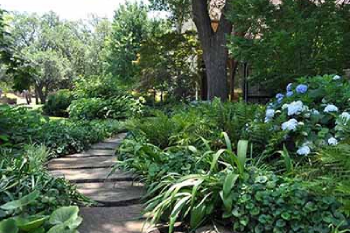
Landscaping
Accents that Add to Your Garden
Turn your garden into an oasis of calm serenity that enhances the beauty of the plants. This presentation offers lots of ideas to make the garden more interesting, including how to add separate garden rooms with seating. Learn how to build striking plant stands and discover how using rocks can make an area appear more finished. See how pathways and secondary patios can emphasize peacefulness by including little basin fountains that provide the sound of trickling water.
Asian Inspired Gardens for Dallas
The Asian style can create calm, tranquil gardens in a variety of looks. There are techniques any gardener can use to give a sense of expanded space, contemplative pauses, and harmonious in whatever area is available. Plant selection for Dallas, hardscape, and ornament is covered in this presentation.
Landscaping for Dallas
Covers considerations for planning a landscape. This talk covers homeowner needs, style, hardscape, plant selection, and desired level of care. Problem-solving is discussed as time allows.
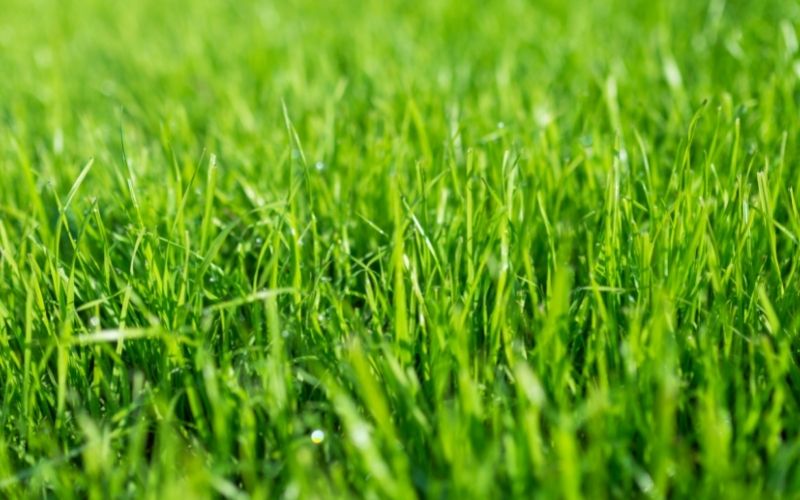
Lawns
Lawn Care for Weed Owners
How to make your lawn look good in less time and with less work

Shade Gardening
Challenges of Shade Gardening
Different amounts of shade in your landscape determine what plants will tolerate some sun and which thrive best in dense shade as well as all those types of shade in between. Learn what density of shade is in your landscape and what plants stand the best chance of thriving in your garden.
Japanese Maples in the Shade Garden
The reds, oranges and golds of Japanese Maples are breathtaking in the spring and fall. These trees can be easily grown in the shade here in North Texas and they are perfect understory trees. Learn about the vast variety of sizes and colors and how and when to plant them. The talk addresses other shade plants as well, and how to add serenity and beauty to the shade garden.
Shade Gardening for Dallas
It is possible to have color, texture, and variety in shade. This talk covers soil preparation, shade gradation, and water requirements. The handout covers understory trees, shrubs, perennials, and annuals.
Challenges of Shade Gardening
Different amounts of shade in your landscape determine what plants will tolerate some sun and which thrive best in dense shade as well as all those types of shade in between. Learn what density of shade is in your landscape and what plants stand the best chance of thriving in your garden.
Japanese Maples in the Shade Garden
The reds, oranges and golds of Japanese Maples are breathtaking in the spring and fall. These trees can be easily grown in the shade here in North Texas and they are perfect understory trees. Learn about the vast variety of sizes and colors and how and when to plant them. The talk addresses other shade plants as well, and how to add serenity and beauty to the shade garden.
Shade Gardening for Dallas
It is possible to have color, texture, and variety in shade. This talk covers soil preparation, shade gradation, and water requirements. The handout covers understory trees, shrubs, perennials, and annuals.
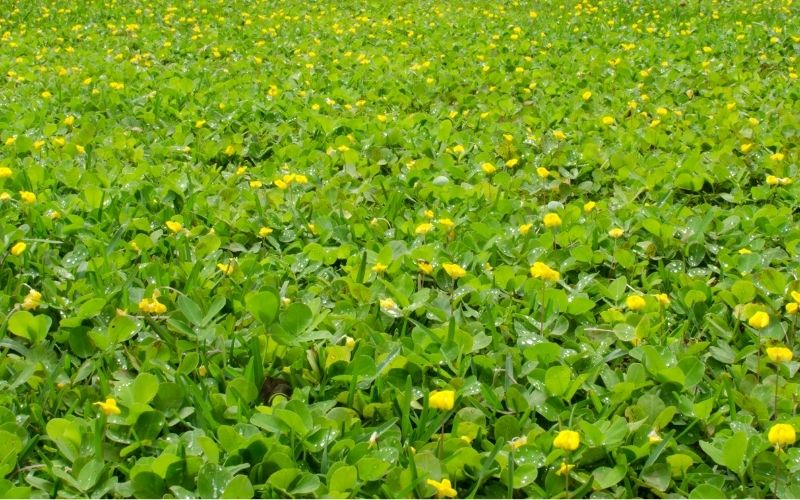
Vines and Ground Covers
Ground Covers for North Texas
Ground covers reduce turf area, introduce texture into the landscape and solve a variety of problems. During this talk, you will learn where to use ground covers and how to maintain them. You will also learn which ground covers do well in North Texas.
Spanish Language Programs
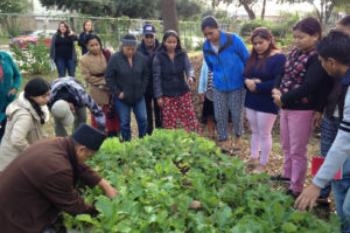
Spanish Language Programs
Gardening with Less Water – Como Tener un Jardin Exitoso en Dallas
Aprende las siete recomendaciones para tener exito en su jardin usando menos agua y dinero. (This talk, given in Spanish or English, covers 7 basic steps to successful gardening using minimal water.)
Rainwater Harvesting
Aprende porque es importante colectar la lluvia y como hacer su propio barril sencillo. (Talk is given in Spanish only. Learn why collecting rainwater is important and how rainwater can benefit your plants. Find out how to make a simple rain barrel.)
Simple Composting
Aprende los usos de abono y como hacer una pila basica y lo que es bueno y lo que es malo para la pila. Aprende como usar gusanos para hacer abono en un contenedor. (Talk is given in Spanish only. Learn the benefits of compost and how to begin and maintain a compost pile, including what should and should not be put in the pile. Learn also about using worms to compost kitchen scraps.)
The Wonderful World of Bromeliads and Tillandsias – El maravilloso mundo de bromelias y tillandsias
This talk, given in Spanish, describes how to care for these unusual and hardy plants. (Aprende cómo cuidar de estas plantas exóticas y resistentes.)
The Wonderful World of Exotic Tropicals – El maravilloso y exotico mundo de plantas tropicales
This talk, given in Spanish, describes how orchids, bromeliads, and/or tillandsias grow in the wild and how to care for them in your home. (Aprende cómo crecen las orquídeas, bromelias y tillandsias silvestres y cómo cuidar y mantenerlas en su casa.)
The Wonderful World of Orchids – El maravilloso mundo de orquídeas
This talk, given in Spanish, describes how to care for your orchid, so it will thrive and live for many years. (Aprende cómo cuidar de su orquídea para que prospere y viva por muchos años.)
What Good are Bugs? – Hay Algo Bueno Sobre los Insectos?
Aprende las siete recomendaciones para tener exito en su jardin usando menos agua y dinero. (This talk, given in Spanish or English, covers 7 basic steps to successful gardening using minimal water.)
Specialty Gardens and Plants
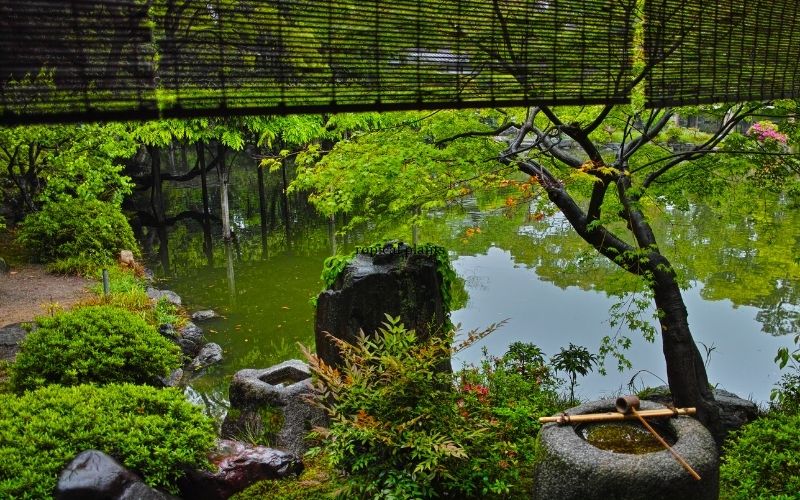
Gardening Around the World
Asian Inspired Gardens for Dallas
The Asian style can create calm, tranquil gardens in a variety of looks. There are techniques any gardener can use to give a sense of expanded space, contemplative pauses, and harmonious in whatever area is available. Plant selection for Dallas, hardscape, and ornament is covered in this presentation.
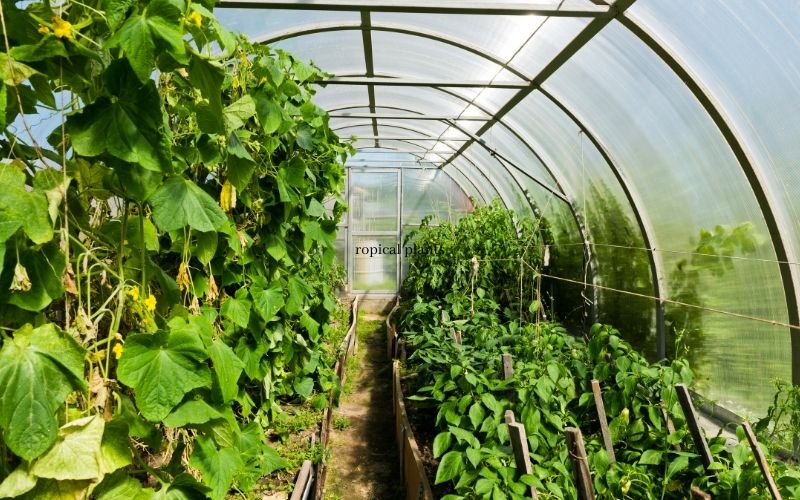
Greenhouses
Greenhouse Galore
Learn to build, operate, and enjoy a greenhouse or hoop-house.
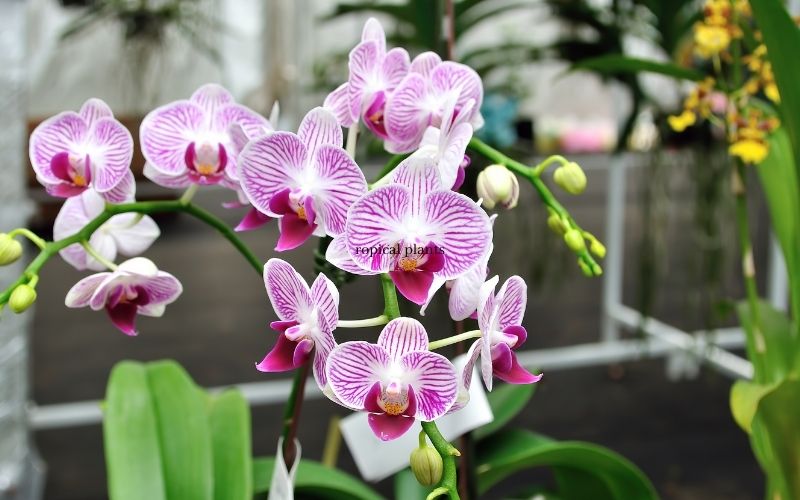
Tropicals
The Wonderful World of Bromeliads and Tillandsias
Learn how to care for these unusual and hardy plants.
The Wonderful World of Exotic Tropicals
Learn how orchids, bromeliads, and/or tillandsias grow in the wild and how to care for them in your home.
The Wonderful World of Orchids
Learn how to care for your orchid, so it will thrive and live for many years.
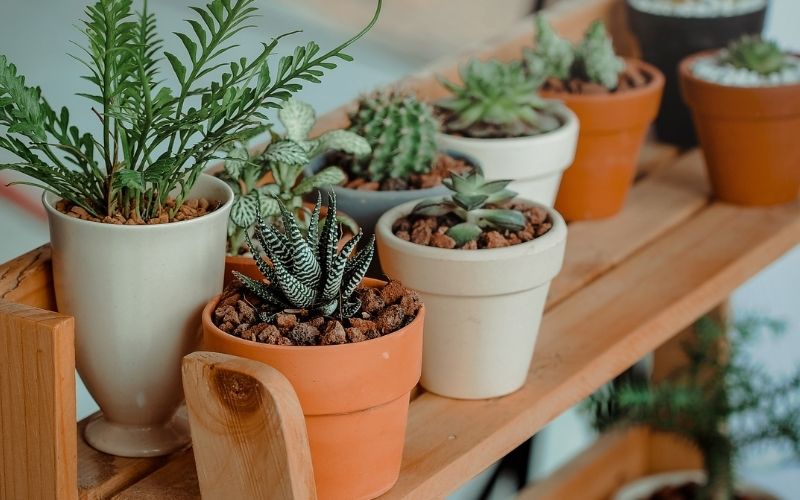
Succulents and Cactus
Seductive Succulents
Succulent plants are beautiful, diverse, and uncomplicated. If you are looking for plants that drink responsibly, will not miss you while you are away and provide years of pleasure, then you need succulents!
Success with Cactus and Succulents
Cactus and other succulents are increasingly popular, but they have special growing requirements. Learn how to have success with them by satisfying 5 important growing conditions: water, light, fertilizer, air circulation, and soil. Examples brought by the speaker illustrate the wide variety of succulents.
Pumpkins with Pizzazz (Pumpkins & Succulents)
Learn how to create a beautiful fall centerpiece for yourself or to give as a hostess gift. Succulent-decorated pumpkins are easy to create and will last for months. You will learn step-by-step methods for making these succulent pumpkins.
Flowers
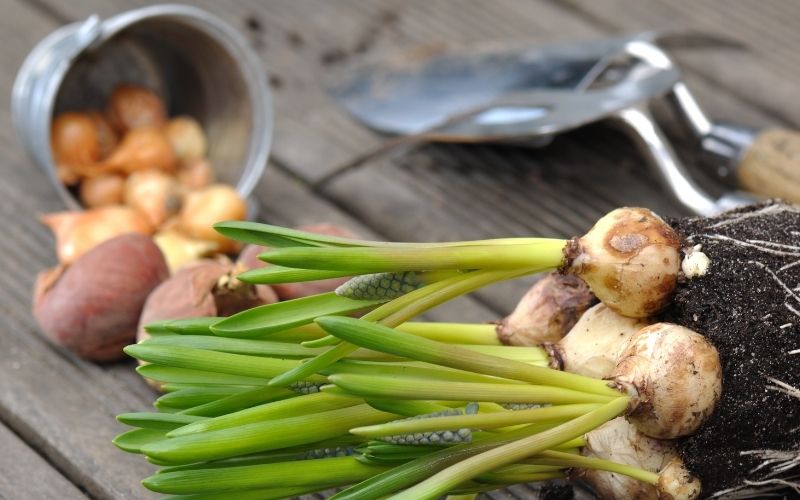
Bulbs
Bulbs for Dallas
This talk covers choosing bulbs that are successful in our area with bloom times from early spring to fall. There are bulbs that fit any landscape; wet, dry, sun or shade. It also covers ideas for planting small bulbs for charm and large bulbs for impact.

Floral Design
Design 101
Learn the basic steps to creating a creative flower design. Includes a lab for designers to practice.
Floral Designs from Your Garden
Elements to give an arrangement texture, line and color can be gathered from any garden or roadside. This talk shows through demonstration how to handle materials from outside the floral trade to make fragrant, creative arrangements for your home throughout the year.
Pumpkins with Pizzazz (Pumpkins & Succulents)
Learn how to create a beautiful fall centerpiece for yourself or to give as a hostess gift. Succulent-decorated pumpkins are easy to create and will last for months. You will learn step-by-step methods for making these succulent pumpkins.
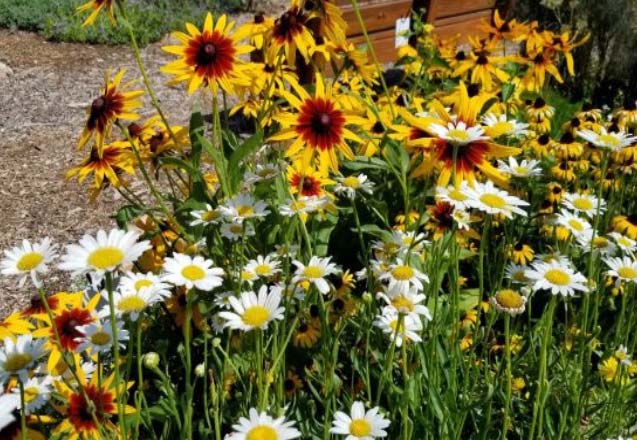
Perennials
Year-Round Blooms with Native Perennials
This presentation shows how to have flowering plants year-round by using native perennials instead of having to spend time and money planting for each season.
Year-Round Blooms with Perennials
This presentation shows how to have flowering plants year-round by using perennials instead of having to spend time and money planting for each season.

Roses
Earth-Kind Roses: The Easiest ‘Color’ for Your Garden
This is an introduction to the various roses that have received the designation of an Earth-Kind Rose, a history of Earth-Kind Roses, how to prepare the soil for planting, planting tips, and the correct way to prune roses to promote/control growth.
Rosette Disease: Deadly Disease with a Pretty Name
Covers the history of this rose disease, how to recognize it, and what to do about it.
Successful Roses
Discusses the conditions for successfully growing roses including planting and pruning, ongoing care, common problems and their control, and recipes for organic insect and disease solutions. Includes descriptions of the classes of roses and photographic examples of each.
Trees and Shrubs
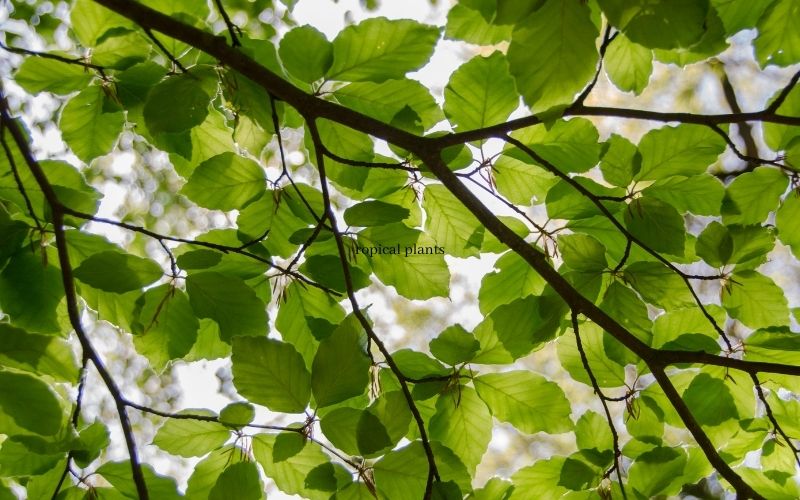
TREES
Benefits of Trees
Trees provide a multitude of benefits that are not well known. This presentation covers much of the existing research on the subject. Most are aware that trees clean our air, but many are not aware they also clean our water and soil, plus much more.
Benefits of Trees
Why do we need trees in our lives
Best Trees for Your Landscape
The Good List and the Not So Good List. Learn about the best trees to plant in your landscape and learn which tree species you might not want to choose.
Care and Maintenance of Your Trees
Learn the important role water, mulch and fertilizer play for your new tree to grow into your best friend for life.
Common Disease (Pathogen) Problems
Some of our most common diseases can be a major problem for trees. Understanding how they function and how to manage them can help keep them healthy. Having a basic understanding of common diseases also reduces the chances of tree loss in the future.
Common Insects That Affect Texas Trees
With an education about the most common insects that affect our region’s trees, we can minimize the damage to the health of a tree. Understanding which insects can be a problem and what to do when they are, will help to keep your trees healthy.
How to Reduce Weather-Related Damage to Trees Due to the Weight of Ice and Snow
High winds can create major damage to trees, as well as the buildup of ice or snow. Understanding the stress placed on the tree and potential ways to prevent damage will help to reduce the odds that your tree(s) will succumb to these problems.
How to Select and Plant Your Trees
The Right Tree Location. The key question you should ask yourself is “Do I need a large, medium or small tree?” Learn how to plant that perfect tree you have selected.
Insects and Diseases That Like Your Trees
Answers the questions “Is my tree in danger?” and “How can I help?”
Oak Wilt Diagnosis/Treatment
Oak Wilt is a devastating pathogen that can only be managed and not controlled. If your area is affected, learning about the details of this complex pathogen will help to minimize the impact to trees in your area.
Recommended Tree Species for North Central Texas
With an education about our region’s native and adapted trees, you can plant a tree with confidence that it will provide many years of enjoyment. The presentation covers the basic information required to select the ideal tree for your yard, based on your needs and preference.
Replacing Trees and Shrubs with Natives
Native trees and shrubs are well-adapted to our area and require less water, fertilizer, and pesticide to keep them healthy. This presentation discusses why native trees and shrubs are better and gives suggestions for which ones to plant.
Selection and Planting of Trees
In order to enjoy many of the benefits of a tree as long as possible, the proper species must be selected for each individual location. The location will determine whether you purchase a small tree, a medium tree, or a large tree, as well as the structure (growth form) of the tree. This presentation covers many of the basics needed to plant the right tree in the right location, which provides many benefits for a greater length of time.
Tidy Trees Please
Learn about the best trees for North Texas.
Tree ID
How to identify trees when you are walking your neighborhood or the trail in the Urban Forest

PRUNING
Proper Tree Pruning
Proper pruning extends the life expectancy of a tree, reduces the odds of structural failure (limb breakage), and increases the health of a tree. This presentation explains why a tree should be pruned, as well as the various methods and tools that are utilized.
The Basics of Tree Pruning
The Right Way and the Wrong Way. Can I do it or should I hire a professional?
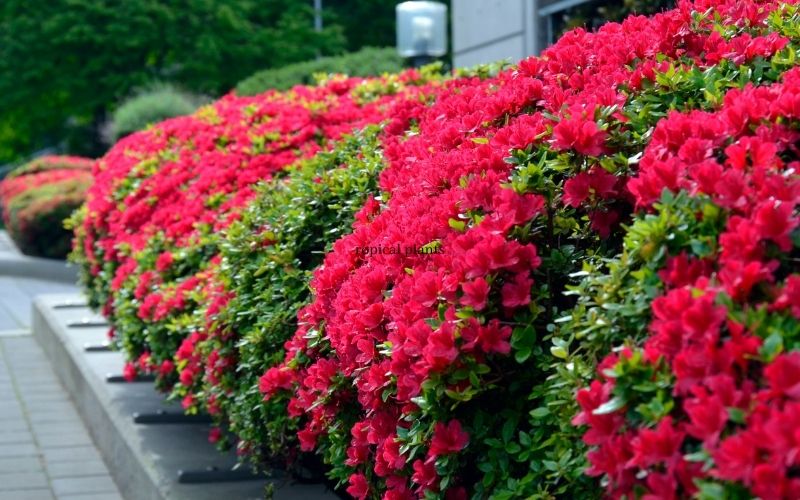
SHRUBS
Replacing Trees and Shrubs with Natives
Native trees and shrubs are well-adapted to our area and require less water, fertilizer, and pesticide to keep them healthy. This presentation discusses why native trees and shrubs are better and gives suggestions for which ones to plant.
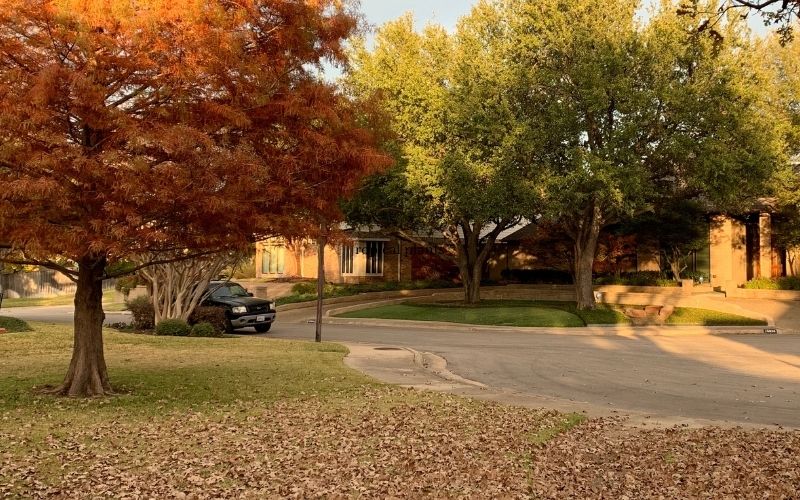
URBAN FOREST
Urban Forest Management
This presentation is designed for those who work to improve our regional or community urban forests. The urban forest is comprised of each individual tree that when grouped together, make up our urban forest. Proper care of our urban forest will have a direct effect on the future sustainability of our communities, such as air, water, or soil quality.
Vision North Texas (VNT) – Planning for Regional Growth
VNT is a public/private partnership to plan for future regional growth. The partnership includes NCTCOG, UT Arlington, and the Urban Land Institute (builders and developers). Our regional population is expected to double shortly after 2030 and we must not only accommodate the growth but also, grow in a sustainable and responsible manner. Efforts by the group help to educate others and spur them into action.
Children's Programs
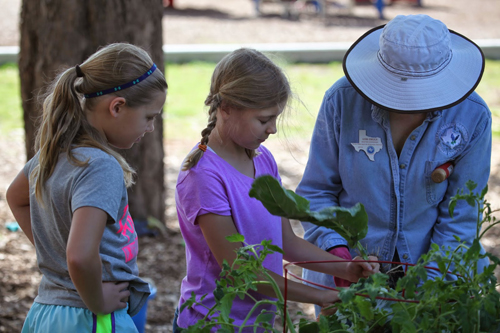
What’s Bugging You?
Geared to children. This presentation explores which insects are pests and which are beneficial. The basics of insect development are identified. How the assassin bug got its name and other unusual facts about insects are presented.
Fun Facts and Tales
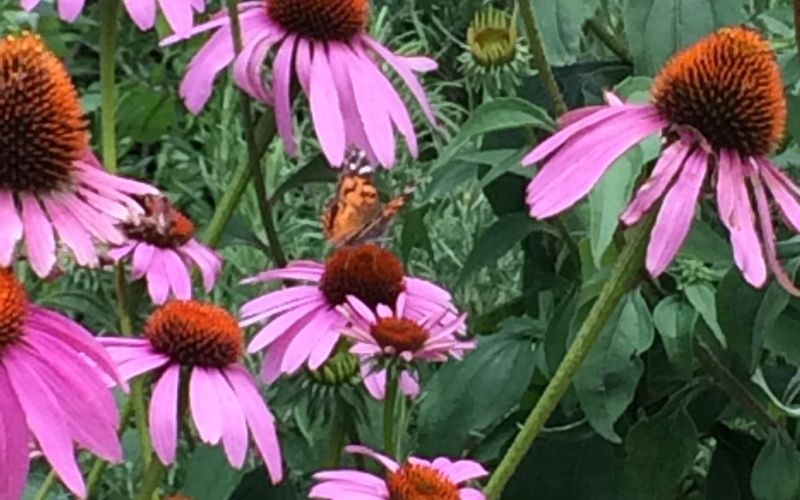
Edible Plants
“Can I Eat That?” Browsing for Food in the Ornamental Garden
This presentation covers some of the flowers, fruit, leaves, and roots that can be grown and eaten in the Dallas area. The nightshade (tomatoes, petunias, tobacco, and potatoes) and umbel (hemlock and carrots) families are discussed as they include both edible and poisonous members.
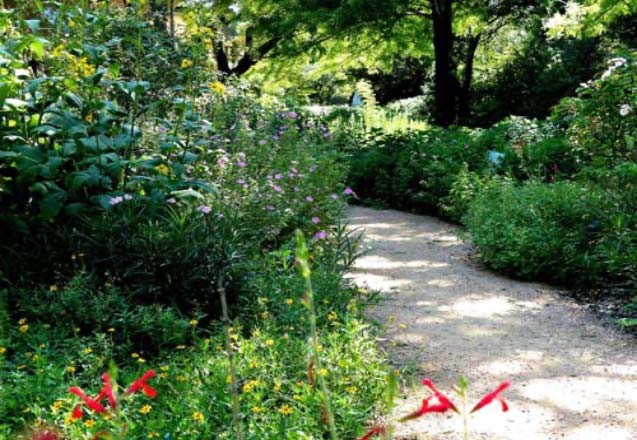
Fun Botanical & Garden Facts
Secret Lives of Plants
Are there plants that are tattletales or gossips? Are there bullies or superheroes in the plant world? How do plants communicate? What kind of music do they like? This talk reveals their secret lives!
How Flies Make Chocolate: A Tale of Four Pollinators
Everybody loves pollinators–but how well do you know them? Why does nature need more than one kind of pollinator? Are flies in my garden a good thing? Learn the answers to these and other questions as you gain information about the special relationships between plants and their pollinators and learn tips for bringing pollinators to your garden.
Sex in the Garden
This entertaining and educational talk describes what really goes on in our gardens: pollination. Learn how flowers lure insects to help with their reproduction and how they reward the pollinators. You will never look at the garden in the same old way again.

Historical Perspective
Floriography: The Language of Flowers
Take a short trip through the history of flowers, in mythology, history, literature and specifically the Victorian Era. This talk acquaints you with the hidden meaning of flowers, how the Victorians used this “secret language” and other interesting facts of flowers.
Folk Medicine and Plants
This presentation explores the historical use of plants as medicine with an emphasis on specific folk medicine plants found in Dallas County. Discusses how plants have been used by various cultures and how medicine is still looking to plants for new medications
Language and Legends of Flowers
This talk introduces you to the rich symbolism of select flowers as inspired by the myths, legends, religions, world cultures and civilizations, literature, sonnets, plays, and the physical characteristics associated with the flowers such as shape and color. You will also learn how people in Western European countries and the United States in the mid-19th century would use flowers to express sentiments and messages by choosing specific flowers as gifts, traditions that carry on today.
Stories Plants Tell
Plants have stories to tell, and the stories may be about the history associated with a plant, how it got its name, unusual characteristics of the plant itself, and usefulness of the plant. Find out which plant is known as the alcoholic plant, which was Chaucer’s favorite plant, which is associated with a bicycle? What are the odds of ‘he loves me,’ or ‘he loves me not.’ These stories and more are presented.
Texas Plant Tales
Native Texas plants have stories to tell. Find out which plant helps us sweep, which plant was needed by the Navy in WWII, which Texas native is associated with the French Legion of Honor Medal, which native Texas tree made its way to Patrick Henry’s home. These stories and more are presented.
What is an Herbarium?
Find out what is involved in a garden of pressed plants, why it is important to preserve plants, and how to preserve plants. This talk also covers the history of herbaria.
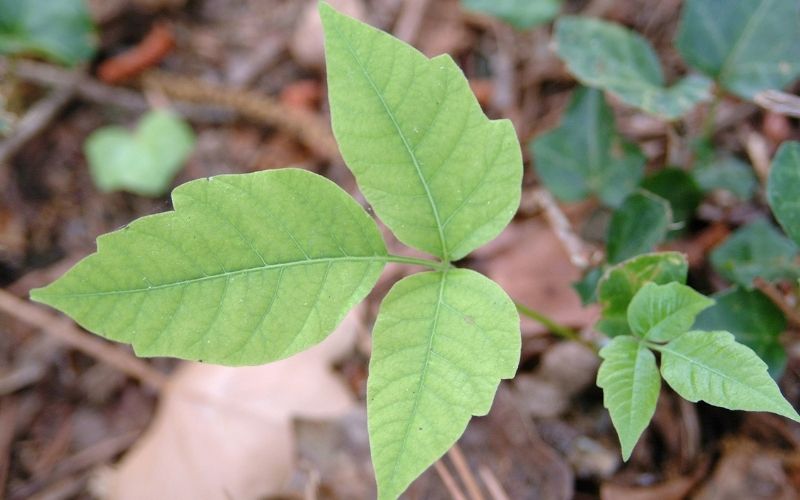
Poisonous Plants
Lovely but Lethal
Many of the herbs and other plants we have in our gardens are actually toxic to our fur baby family members (our pets). This talk identifies many of these plants, explains what symptoms your pets may exhibit and identifies things you can do to prevent pets from ingesting toxins.
Wicked Plants
This fun presentation covers plants that are deadly, illegal, intoxicating, dangerous, painful, and destructive/invasive. This presentation uses interesting historical anecdotes, photos to identify the plants and facts so gardeners can avoid these plants in their landscapes. The presentation can be adapted for time periods ranging from 30 minutes to an hour+ in length.
Wicked Plants 2
This presentation expands on things we covered in Wicked plants 1. It provides an entertaining look at those plants that are dangerous, deadly, illegal, and invasive.

Weeds
A Weed by Any Other Name – Might be a Beautiful Flower
Identify common weeds in your yard because to know one may be to love one. You may find common weeds that can be used in your garden.
Plants Behaving Badly
Some of the plants that we love to hate are discussed. Find out what plant killed Lincoln’s mother and what plant would be a good diet if it were not so addictive. Learn to identify some of those pesky weeds that appear in your yard.
Vegetables and Herbs

HERBS - GROWING & COOKING
Basil—The King of Herbs
Basil has been called the King of Herbs and gardeners universally like to plant it in their garden. This talk outlines basil’s history, cultivation, its many varieties, and culinary uses including iconic pestos.
Create Global Cuisine with Herbs
Herbs native to an area define the flavor of world cuisines. From Mexico to Southeast Asia, discover how using the appropriate herbs in combinations with local foods will produce ethnic cuisine.
Herbs – A Shared History
Herbs grow well in North Texas, but there is more to them than “parsley, sage, rosemary, and thyme;” they are important links to our past. Herbs have flavored our food, helped heal us, and scented our surroundings. This talk explores some of the historical and cultural aspects of herbs—why they have become part of our cuisine, medicines, cosmetics, and other products we use.
Herbs: Not Your Mother’s Plants Anymore!
No longer boring and predictable, herbs are being used in landscapes, flower arrangements and even trendy bar beverages! You will be amazed and delighted learning how versatile herbs can be.
Homegrown Herbs for Healthier Home Cooking
Explore 10 favorite herbs that are easily grown in North Texas and discover culinary tips and techniques to create delectable, healthy dishes.
Shady Herbs for Shady Places
Herbs need sun – or do they? Learn which herbs can be grown in light shade or filtered shade and how plants can adapt to little sun. Find out which favorite culinary herbs do well with partial shade in the heat of Texas.
Tasty Cooking with Herbs
This talk focuses on growing herbs for culinary uses and it also suggests ways to use herbs in recipes.
Unusual Herbs: Try Some New Ones
From Anise Hyssop to Cutting Celery or Salad Burnett, delve into lesser-known herbs that can be grown in the Dallas area. For the gardener who craves variety and enjoys plants with unique properties.
Using Edibles in the Landscape
Prostrate rosemary with tiny blue flowers and pretty purple-leafed basil are just a couple of attractive herbs to use in the landscape. Herbs provide textures and aromas; attract butterflies and hummingbirds to a large yard or tiny patio.
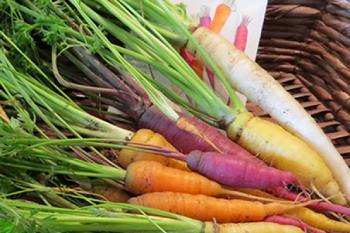
VEGETABLE GARDENING
Gone Totally Tomatoes
Presents how to grow tomatoes from seed, choose a variety for our area, and learn how to keep your friends from multiplying when the tomatoes get ripe!
Growing and Using Salad Greens
Do not overlook salad greens for spring and fall for tasty and healthy eating in North Texas. Move over lettuce, here come kale, Swiss chard, and salad greens!
Preparing a Vegetable Garden from the Ground Up
Vegetable gardening is more than just sticking plants in the ground. This talk explains preparing the ground for a vegetable garden, what to plant and when, and what to do after the garden is done to preserve the fertility of the soil. Presentation lasts 45-60 minutes, depending on questions.
Raised Bed and Vegetable Gardening for Homeowners
This talk describes and discusses raised bed and vegetable gardening and includes instructions for the simple construction of beds. The speaker covers soil amendments and soil preparation which are essential for a successful garden. Methods for square foot gardening and its advantages for ease of maintenance round out the topic.
Start Your Vegetables from Seed/Successful Seed Starting
Save money and feel accomplished while you grow the varieties you want by starting your vegetables from seed. This demonstration shows step-by-step how to successfully propagate seeds and care for seedlings before planting them outdoors in the garden. Participants learn about the tools, supplies, and procedures.
Tons of Tomatoes
Learn how to grow the best Texas tomatoes ever.
VEG-OUT
Learn when and how to grow your own veggies.

